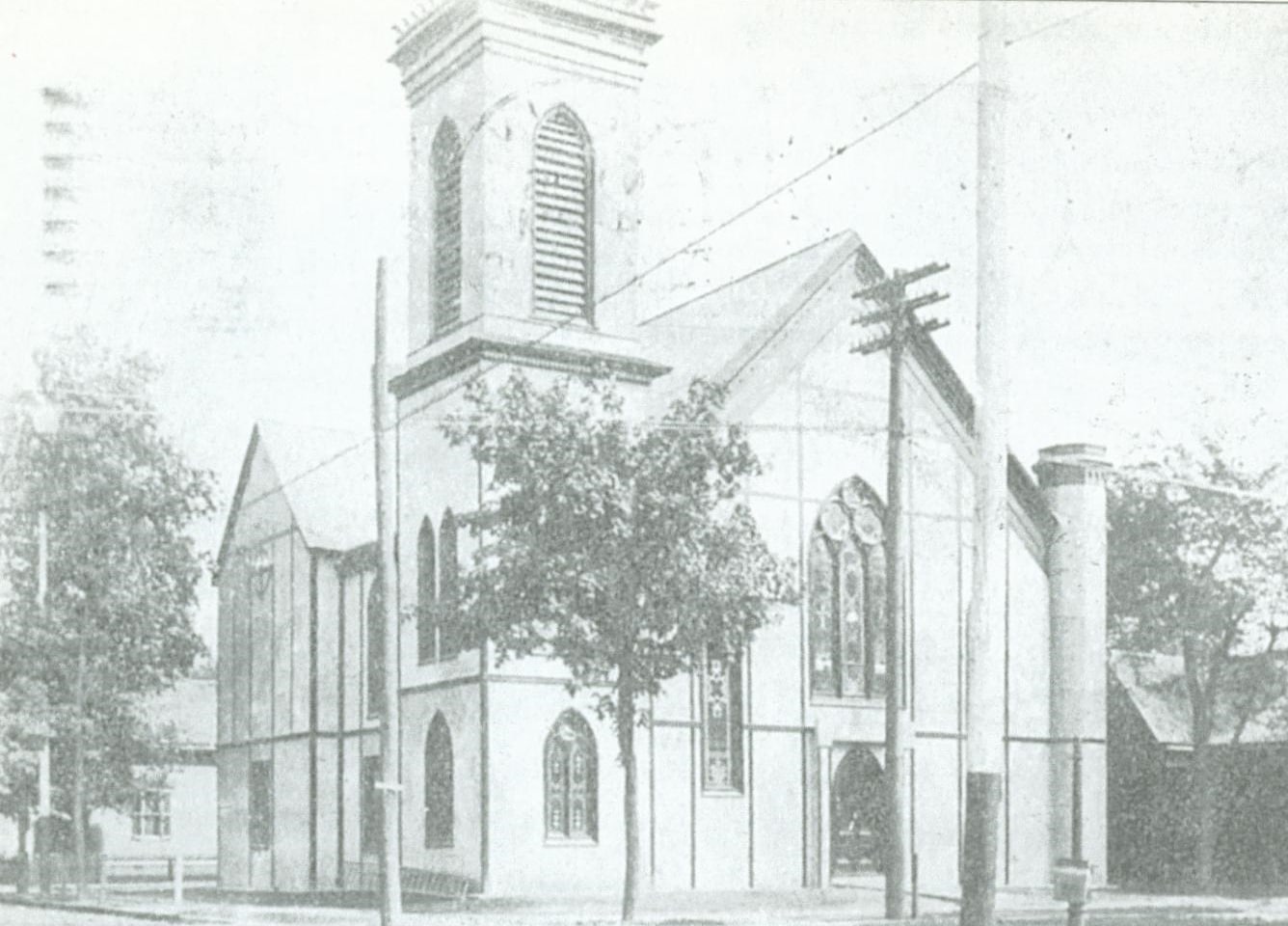This is a revised version of a “From the Local History Room” column that first appeared in May 2012 before the launch of this weblog, republished here as a part of our Illinois Bicentennial Series on early Illinois history.
Having taken an overview last week of the early development of the exercise of religious faith in Illinois, this week we’ll take a closer look at seeds of faith in Pekin’s early history.
The first white settlers in Pekin, the Tharps, arrived in 1824 and 1825. “The Tharps had become Methodists before they left Ohio, and so Jacob Tharp welcomed a circuit-riding Methodist minister, Reverend Jesse Walker, into his log cabin in 1826 to conduct Town Site’s first preaching service,” says the 1974 Pekin Sesquicentennial.
In his 1879 History of Tazewell County, page 580, Charles C. Chapman quotes from the diary of Jacob Tharp: “However, in the same season [1826], but I cannot now remember whether before or after Dillon and Hinkle’s goods arrived, the Methodists had established a mission or circuit for this part and range of the country. Religious services by that persuasion were first held at my friend’s, Gideon Hawley, on Sand Prairie, when I first met our preacher, Jesse Walker, and invited him to give us a discourse at the ‘Town Site.’ He thought it unnecessary, as no body but myself and family, and my son Jonathan and family, resided there, but I insisted and he complied. We had quite an audience. Pekin then giving promise of being something in the future. Some came to examine the site, some to do some trading, and some to look at the river and to fish, etc. The meeting was held in my house.”
From that seed grew Pekin’s first Methodist church, which met informally in members’ homes until the 1830s, following the 1829 arrival of “fiery, plainspoken Joseph Mitchel,” who was installed as the church’s first minister.
“. . . it was under Reverend Mitchel’s guidance,” explains the 1974 Sesquicentennial, “that Pekin’s first church building was erected in the 1830’s on the north side of Elizabeth between Capitol and Third Streets. In an attempt to raise funds for the proposed two-story building, Jacob Tharp returned to Ohio, where he managed to raise $100. Unfortunately, he spent $200 on the trip, so only the lower half of the building could be completed. The congregation fondly called the building the ‘little brick church,’ but in later years it became known as the ‘foundry church,’ apparently because of its proximity to such an establishment.”

Several other Christian and non-Christian faiths also established a visible presence around this general period of time, including Catholicism, which had retained a presence in central Illinois since the days of the French missionary explorers.
“Early records indicate that Pekin residents sought a Catholic Church as early as 1839; and it is reported, but not authenticated, that a St. Stephen’s Chapel was built shortly thereafter,” says the Sesquicentennial. In fact, the structure (apparently made of logs) was dedicated to St. Lawrence, not St. Stephen. “Pekin: A Pictorial History” says that around 1850 the Catholics of Pekin moved to Flint’s Hall on lower Court Street, where the first regular Masses began to be offered by Father John C. Brady.
In 1863, Father Jerome A. Ryan of Peoria presided at the laying of the cornerstone of St. Stephen’s Chapel at the corner of Second and Susannah. That served as the original church for St. Joseph’s Parish, which served the English-speaking Catholics in town. (German-speaking Catholics would build their own Sacred Heart Church in 1872.) The original St. Joseph’s Church was replaced in 1904, and that church in turn was succeeded by the present structure in 1969.
Pekin’s old Methodist Church and the first St. Joseph Church were linked by a stolen Mexican convent church bell, as related in Chapman’s 1879 history, page 585:
“The bell, which for years was mounted in the tower of the old frame church, and which rung and toled (sic) alike in joy or sadness, for marriage or funeral, was presented to the Trustees of the Church by the following gentlemen: Samuel Rhoads, Colonel Frank L. Rhoads, William Tinney, and John M. Gill, and was captured by them when in Mexico, in the Mexican War. They took it from the tower of a Roman Catholic Monastery, at Vera Cruz, packed it in a flour barrel with straw, and brought it home with them to Pekin, and presented it the Methodist Church of this city, where it, with its old cracked chimes, made singular music for the masses in its ringing for service or fire. But the old bell wearied of Protestantism, and in the year 1867 was sold, with its full consent, to the English Roman Catholic Church of Pekin, where its peculiar tones may be heard at five in the morning, calling its devotees to the early mass. And thus the old bell has returned to its early faith and original creed.”

The Mexican convent bell remained in use at St. Joseph’s Church until the construction of a new church in 1904. What became of it after 1904 is unclear. Local historian William H. Bates said in his 1916 “Souvenir of Early and Notable Events” that, “The bell is still in possession of St. Joseph’s Society,” and the 1949 Pekin Centenary said only that it is “now no longer in use.” A May 16, 1978 Pekin Daily Times article says it was stored for a while in the church attic at St. Joseph’s Parish, and Lanson Pratt’s nephew Edward Neumann of Delavan says the parish had talked of donating it to the State of Illinois. The 1978 Pekin Times article only says that “its current location could not be determined.”
Next week we’ll recall some of the stories of Pekin’s pioneer Methodist pastor, “fiery, plainspoken Joseph Mitchel.”










